#Miriam Kramer
Text



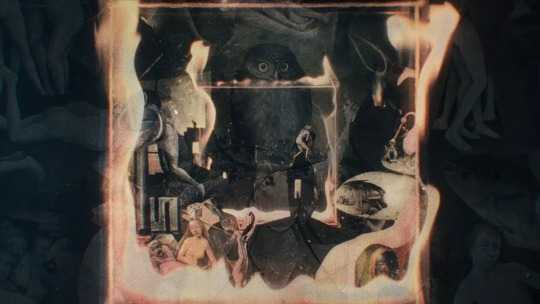
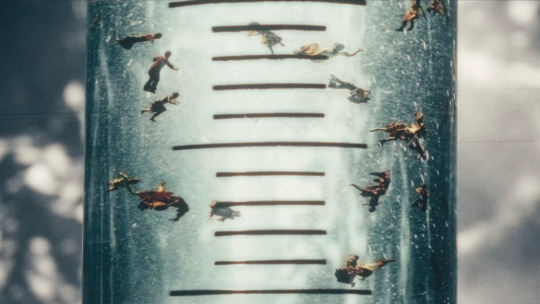
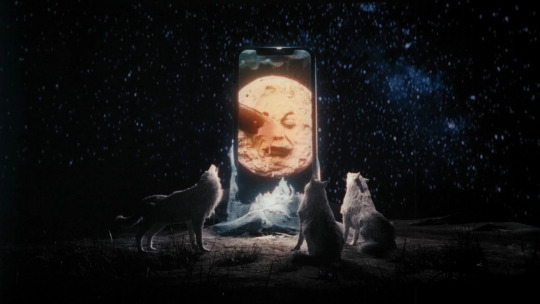
Once Within a Time (2022)
dir. Godfrey Reggio
#cinema#film#cinematography#screencaps#movies#film stills#opera#Godfrey Reggio#once within a time#Apollo Garcia Orellana#Tara Khozein#Brian Belott#John Flax#Sussan Deyhim#Miriam Kramer#Mike Tyson#Aaron Kingsley Adetola
9 notes
·
View notes
Text


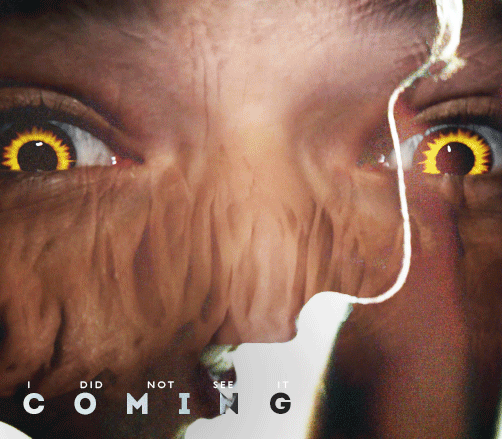



scott appreciation week (day 3) → i'm not ready to die yet
— miriam kramer
#twedit#scottmccalledit#scottmccallweek23#teenwolfedit#scott mccall#any time i do a gifset without adding a color fill layer to it its such a toss up about whether any of it will look like it goes together#such is life#anyways i love this guy
190 notes
·
View notes
Text

Thank you to everyone that participated in Scott McCall Week 2023!! We received over 40 entries this year and have been so delighted to see the amazing works you’ve created to celebrate Scott. 😁 Below is a round up of all of the contributions—days 3-7 and alt prompts are under the cut! For more Scott-centric works, including ones from previous events, we’d encourage you to check out scottappreciation’s collection of Scott-centric works.
If we’ve missed a post by you, please send us an ask, and we’ll add it.
Thank you again for helping make this event so successful, and we look forward to hosting more events in the future!
Day One - You’re an Omega / Traits
s1/2 moodboard and fic by @jjsstars
scott in s2 + soap fanvid by @bericas
what beautiful eyes you have fanart by @toastybugguy
an alpha of your own pack gifset by @momentofmemory
traits graphic by @seemebaremyteethforyou
s2 fic by @kitkatwinchester
scott + traits gifset by @letthestorieslive
Day Two - That’s All I Got / Quotes & Lyrics
scott & parental figures moodboard and fic by @jjsstars
sciles fanart by @slumop
ocean vuong gifset by @bericas
battle born gifset by @seemebaremyteethforyou
inheritance gifset by @momentofmemory
you’re not a monster fanart by @toastybugguy
think of everything you’ve got fic by @smile667
Day Three - I’m Not Ready to Die Yet / Fight Scene or Romance Scene
fight scene graphic by @seemebaremyteethforyou
healing/processing moodboard and fic by @jjsstars
brothers, bitch! fanart by @toastybugguy
it’s just something i traced with my fingers graphic by @scribeoffate
miriam kramer gifset by @bericas
Day Four - The Shape You Take / Relationships
once i had a child fanart by @toastybugguy
identity moodboard and fic by @jjsstars
scott + hayden graphic by @seemebaremyteethforyou
Day Five - I’m Going to Tell You a Story / Aesthetics & Colors
scott + colors gifset by @letthestorieslive
that fearful sound of fire fanart by @slumop
that’s what he wants fanvid by @momentofmemory
scira canon divergence moodboard and fic by @jjsstars
haunting memories fanart by @toastybugguy
s2 scackson canon divergence fanvid by @domesticated-feral
Day Six - Trust Me, I Restrained Myself / Close-ups
e.d. smith gifset by @momentofmemory
the colors in your eyes captivate my mind fanart by @slumop
rage moodboard and fic by @jjsstars
pantone colors + closeups graphic by @seemebaremyteethforyou
rubble and dust fic by @princeescaluswords
Day Seven - Dealer’s choice
conversations with a future veterinarian shitposts by @spikeface
you stopped to bake it in a little werewolf oven fanart by @nacreousgore
scackson brokeback mountain au fanvid by @domesticated-feral
after hours sceo fic by @wolfboy88
raymond carver gifset by @momentofmemory
talking to allison moodboard and fic by @jjsstars
language of flowers graphic by @seemebaremyteethforyou
lay your gun down sceo fic by @shinigamimailjeevas
scott week pride month fanart by @toastybugguy
Alt 2: Lil Shit Scott
scott + (◡‿◡✿) (ʘ‿ʘ✿) (ʘ‿ʘ)/✿ gifset by @momentofmemory
#scott mccall#tyler posey#teen wolf#sciles#scallison#sceo#scira#scisaac#scackson#teen wolf event#scottmcallweek23
44 notes
·
View notes
Text
Killers I'd Like to Step On Me for Valentines Day
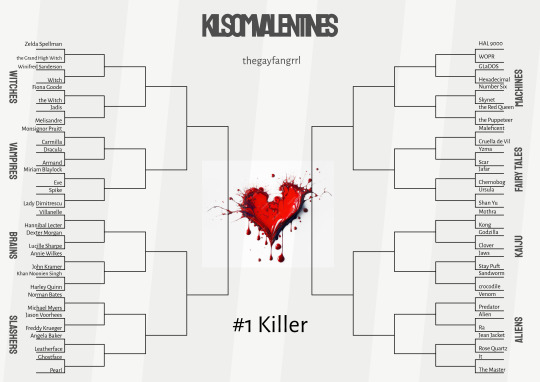
KILSOM Valentines (Round One)
Witches bracket:
the Grand High Witch (The Witches) vs. Zelda Spellman (The Chilling Adventures of Sabrina)
Winifred Sanderson (Hocus Pocus) vs. Witch (Into the Woods)
the Witch (The Witch) vs. Fiona Goode (American Horror Story Coven)
Jadis (The Lion, the Witch, and the Wardrobe) vs. Melisandre (Game of Thrones)
Vampires bracket:
Carmilla von Karnstein (Carmilla) vs. Father Paul (Midnight Mass)
Count Dracula (Dracula) vs. Armand (Interview with the Vampire)
Eve (Only Lovers Left Alive) vs. Miriam Blaylock (The Hunger)
Spike (Buffy the Vampire Slayer) vs. Lady Alcina Dimitrescu (Resident Evil)
Brains bracket:
Villanelle (Killing Eve) vs. Hannibal Lecter (Hannibal)
Lucille Sharpe (Crimson Peak) vs. Dexter Morgan (Dexter)
Annie Wilkes (Misery) vs. John Kramer (Saw)
Khan Noonien Singh (Star Trek) vs. Harley Quinn (DC Comics)
Slashers bracket:
Norman Bates (Psycho) vs. Michael Myers (Halloween)
Jason Voorhees (Friday the 13th) vs. Freddy Krueger (A Nightmare on Elm Street)
Angela Baker (Sleepaway Camp) vs. Leatherface (The Texas Chainsaw Massacre)
Ghostface (Scream) vs. Pearl (Pearl)
Machines bracket:
HAL 9000 (2001: A Space Odyssey) vs. WOPR (WarGames)
GLaDOS (Portal) vs. Hexadecimal (ReBoot)
Number Six (Battlestar Galactica) vs. Skynet (The Terminator)
the Puppeteer (Ghost in the Shell) vs. the Red Queen (Resident Evil)
Fairytales bracket:
Maleficent (Sleeping Beauty) vs. Cruella de Vil (101 Dalmatians)
Yzma (The Emperor's New Groove) vs. Scar (The Lion King)
Jafar (Aladdin) vs. Chernobog (Fantasia)
Ursula (The Little Mermaid) vs. Shan Yu (Mulan)
Kaiju braket:
Mothra (Mothra) vs. Kong (King Kong)
Godzilla (Godzilla) vs. Clover (Cloverfield)
the Shark (Jaws) vs. Stay Puft Marshmallow Man (Ghostbusters)
Crocodile (Crocodile) vs. Sandworm (Dune)
Aliens bracket:
Venom (Marvel Comics) vs. Predator (Predator)
Ra (Stargate) vs. Xenomorph Queen (Alien)
Jean Jacket (Nope) vs. Rose Quartz (Steven Universe)
Pennywise (It) vs. The Master (Doctor Who)
8 notes
·
View notes
Link
Check out this listing I just added to my Poshmark closet: Shop Vintage Brooches Here.
0 notes
Text
Umlandi
South African music keeps being part of the global music conversation and the artists are doing their best at exporting it across all frontiers.
South African popular music might be having the best years it has had in recent history. Carrying on from the momentum gained during the pandemic and its lockdown/travel restrictions, 2022 has been one of the years artists get to eat the fruits of their hard labour.
Contemporary artists are touring, performing at the biggest global stages amongst the best the world has to offer. From the Grammys and Coachella to Ibiza and Afronation, everyone is outside and is putting out their best music while at it. South African music is part of the global African music conversation and the artists are doing their best to export the music.
South Africa is known for its music that has played a huge role towards the country's society. The music of South Africa is very diverse with a wide variety of genres such as Marabi, Kwaito, House music, Isicathamiya, Gqom and Amapiano etc.
With countless hits, such as Nkosi Sikelel' iAfrika, Pata Pata, Umqombothi (song), Vulindlela and legendary singers such as Miriam Makeba, Brenda Fassie, Hugh Masekela, Yvonne Chaka Chaka and Lucky Dube, South African music has played a huge impact in Africa(especially in Southern Africa, to a point where countries such as Namibia and Botswana have their own versions of South African music genres such as Kwaito etc.
Afrikaans music was primarily influenced by Dutch folk styles, along with French and German influences, in the early twentieth century. Zydeco-type string bands led by a concertina were popular, as were elements of American country music, especially Jim Reeves. The most prolific composers of "tiekie draai" Afrikaans music were lyricist Anton De Waal who wrote many hit songs with songwriters, pianist Charles Segal ("Hey Babariebab Se Ding Is Vim", "Kalkoenjie", "Sy Kom Van Kommetjie" and many others) and accordionist, Nico Carstens. Bushveld music based on the Zulu were reinterpreted by such singers as Marais and Miranda. Melodramatic and sentimental songs called trane trekkers (tearjerkers) were especially common. In 1973, a country music song won the coveted SARI Award (South African Music Industry) for the Song of the Year – "My Children, My Wife" was written by renowned South African composer Charles Segal and lyricist Arthur Roos. In 1979 the South African Music scene changed from the Tranetrekkers to more lively sounds and the introduction of new names in the market with the likes of Anton Goosen, David Kramer (singer), Koos du Plessis, Fanie de Jager, Flaming Victory and Laurika Rauch. Afrikaans music is currently one of the most popular and best selling industries on the South African music scene.
After World War I, Afrikaner nationalism spread and such musicians as Jewish pianist and composer Charles Segal and accordionist Nico Carstens were popular.
CONTRACT US
Phone:
+2349120010105
Website:
https://umlandi.com/
Social Link:
https://twitter.com/naijasong
1 note
·
View note
Text



mother mother / miriam kramer / richard siken
#does this make any sense??? no. i made this for Myself#I Am My Own Demographic#mother mother#richard siken#miriam kramer#web weaving
15 notes
·
View notes
Text
Maybe I will survive, and because
I did not see it coming, I will stop blaming myself.
I will stop blaming myself for my mangled remains,
— Miriam Kramer, from “Five Seconds and Counting,” published in Anti-Heroin Chic
#quote#Miriam Kramer#poetry#Anti Heroin Chic#out of my collection#Five Seconds and Counting#trauma tw
2K notes
·
View notes
Text
If I am not good at signing up for pain, I am not good at anything at all.
I have never tried to hide this, I displayed it on my body with pride,
displaced reflection masking the broken at my core.
I wore the neon band aids. The ones that scream
“I dare you to ask me what stupid shit I did this time.”
insides held together, lit up brightly like it was 1993.
My outsides ached to glow, to show what I could not articulate.
— Miriam Kramer, from “Unstruck,” published in Anti-Heroin Chic
134 notes
·
View notes
Text
Candyman (2021) | República Cinéfila
Candyman (2021) | República Cinéfila
Candyman es la nueva versión del clásico de terror de los años 90’s, un filme al que no le cuesta generar climas, pero que por poco se ahoga en medio de la declamación y el subrayado.
La crítica especializada, en particular la norteamericana, viene hablando maravillas de la nueva versión de Candyman, que en verdad es una secuela de aquella película de 1992 dirigido por el cineasta Bernard Rose, y…

View On WordPress
#Brian King#Candyman#Carl Clemons-Hopkins#Cassie Kramer#Colman Domingo#Genesis Denise Hale#Jordan Peele#Kyle Kaminsky#Mark Montgomery#Miriam Moss#Nathan Stewart-Jarrett#Nia DaCosta#Rebecca Spence#Teyonah Parris#Universal Pictures#Vanessa Williams#Yahya Abdul-Mateen II
0 notes
Text
The Basics of Kemetic Philosophy (without the appropriated shit from Judaism)
I'm starting a series on Kemetic philosophy because a lot of my readings on it have included things like Kabbalah (Kabala, Kabbala, Qabala, etc.) which is directly appropriated from Judaism, and definitely would not have been included in ancient Kemetic philosophy.
This series relies heavily on the following books/independent publications (this continues to be updated as the series continues):
The Instruction of Ptah-Hotep and the Instruction of Ka'Gemni: The Oldest Books in the World translated by John Murray
Teachings of Ptahhotep
Maat: The 11 Laws of God by Ra Un Nefer Amen (somewhat, this book literally has the Kabbalistic tree of life on its' cover so I don't take a lot from it--it's really just a good jumping-off point because it covers so much)
Maat: The Moral Idea in Ancient Egypt by Maulana Karenga
The Literature of Ancient Egypt: An Anthology of Stories, Instructions, and Poetry edited with an introduction by William Kelly Simpson. Authors include Robert K. Ritner, Vincent A. Tobin, and Edward F. Wente.
I Am Because We Are: Readings in Africana Philosophy by Fred Lee Hord, Mzee Lasana Okpara, and Johnathan Scott Lee.
Ancient Egyptian Literature: Volume I: The Old and Middle Kingdoms by Miriam Lichtheim (2006 Edition)
Current Research in Egyptology 2009: Proceedings of the Tenth Annual Symposium by Judith Corbelli, Daniel Baotright, and Claire Malleson
Old Kingdom, New Perspectives: Egyptian Art and Archaeology 2750-2150 BC by Nigel Strudwick and Helen Strudwick
Current Research in Egyptology 2010: Proceedings of the Eleventh Annual Symposium by Maarten Horn, Joost Kramer, Daniel Soliman, Nico Staring, Carina van den Hoven, and Lara Weiss
Current Research in Egyptology 2016: Proceedings of the Seventeenth Annual Symposium by Julia M. Chyla, Joanna Dêbowska-Ludwin, Karolina Rosińska-Balik, and Carl Walsh
Mathematics in Ancient Egypt: A Contextual History by Annette Imhausen
The Instruction of Amenemope: A Critical Edition and Commentary by James Roger Black
"The ancient Egyptian concept of Maat: Reflections on social justice and natural order" by R. James Ferguson
The Mind of Ancient Egypt: History and Meaning in the Time of the Pharaohs by Jan Assmann
Transformations of the Inner Self in Ancient Religions by Jan Assmann and Guy G. Stroumsa
Of God and Gods: Egypt, Israel, and the Rise of Monotheism by Jan Assmann
Death and Salvation in Ancient Egypt by Jan Assmann
Cultural Memory and Early Civilization: Writing, Remembrance, and Political Imagination by Jan Assmann
From Akhenaten to Moses: Ancient Egypt and Religious Change by Jan Assmann
Book of the Dead: Becoming God in Ancient Egypt edited by Foy Scalf with new object photography by Kevin Bryce Lowry
It also relies on the following journal articles/book chapters:
"A Modern Look at Ancient Wisdom: The Instruction of Ptahhotep Revisited" by Carole R. Fontaine in The Biblical Archaeologist Volume 44, No. 3
"The Teaching of Ptahhotep: The London Versions" by Alice Heyne in Current Research in Egyptology 2006: Proceedings of the Seventh Annual Symposium
"One Among Many: A Divine Call for Gender Equity" by Sandra Y Lewis in Phylon (1960-) Volume 55, No. 1 & 2.
"A Tale of Semantics and Suppressions: Reinterpreting Papyrus Mayer A and the So-called War of the High Priest during the Reign of Ramesses XI" by Kim Ridealgh in Studien zur Altägyptischen Kultur
EDITORIAL: African Philosophy as a radical critique" by Alena Rettová in Journal of African Cultural Studies Volume 28, No. 2
"Sanctuary Meret and the Royal Cult" by Miroslav Verner in Symposium zur Königsideologie / 7th Symposium on Egyptian Royal Ideology: Royal versus Divine Authority: Acquisition, Legitimization and Renewal of Power. Prague, June 26–28, 2013
"The Ogdoad and Divine Kingship in Dendara" by Filip Coppens and Jiří Janák in Symposium zur Königsideologie / 7th Symposium on Egyptian Royal Ideology: Royal versus Divine Authority: Acquisition, Legitimization and Renewal of Power. Prague, June 26–28, 2013
"The Egyptian Temple as a Place to House Collections (from the Old Kingdom to the Late Period) by Roberto A. Diaz Hernández in The Journal of Egyptian Archaeology Volume 103, No. 1
"Death and the Sun Temple: New Evidence for Private Mortuary Cults at Amarna" by Jacquelyn Williamson in The Journal of Egyptian Archaeology Volume 103, No. 1
"Mery-Maat, An Eighteenth Dynasty iry '3 pr pth From Memphis and His Hypothetical Family" by Rasha Metawi in The Journal of Egyptian Archaeology Volume 101, 2015
"A New Demotic Translation of (Excerpts of) A Chapter of The "Book of the Dead" by Joachim Friedrich Quack in The Journal of Egyptian Archaeology Volume 100, 2014
"The Shedshed of Wepwawet: An Artistic and Behavioural Interpretation" by Linda Evans in The Journal of Egyptian Archaeology Volume 97, 2011
"(De)queering Hatshepsut: Binary Bind in Archaeology of Egypt and Kingship Beyond the Corporeal" by Uroš Matić in Journal of Archaeological Method and Theory Volume 23, No. 3 "Binary Binds": Deconstructing and Gender Dichotomies in Archeological Practice.
"Egyptian Maat and Hesiodic Metis" by Christopher A. Faraone and Emily Teeter in Mnemosyne Volume 57 Fasc. 2
"Maat and Order in African Cosmology: A Conceptual Tool for Understanding Indigenous Knowledge" by Denise Martin in Journal of Black Studies Volume 38, No. 6
"Memphis and Thebes: Disaster and Renewal in Ancient Egyptian Consciousness" by Ogden Goelet in The Classical World Volume 97, No. 1
"A Radical Reconstruction of Resistance Strategies: Black Girls and Black Women Reclaiming Our Power Using Transdisciplinary Applied Social Justice, Ma'at, and Rites of Passage" by Menah Pratt-Clarke in Journal of African American Studies Volume 17, No. 1
"Emblems for the Afterlife" by Marley Brown in Archaeology Volume 71, No. 3
"Human and Divine: The King's Two Bodies and The Royal Paradigm in Fifth Dynasty Egypt" by Massimiliano Nuzzolo in Symposium zur ägyptischen Königsideologie/8th Symposium on Egyptian Royal Ideology: Constructing Authority. Prestige, Reputation and the Perception of Power in Egyptian Kingship. Budapest, May 12-14, 2016
"The Block and Its Decoration" by Josef Wegner in The Sun-shade Chapel of Meritaten from the House-of-Waenre of Akhenaten
"The African Rites of Passage and the Black Fraternity" by Ali D. Chambers in Journal of Black Studies Volume 47, No. 4
"Review: Translating Ma'at" by Stephen Quirke in The Journal of Egyptian Archaeology Volume 80, 1994
"Additions to the Egyptian Book of the Dead" by T. George Allen in Journal of Near Eastern Studies Volume 11, No. 3
"Types of Rubrics in the Egyptian Book of the Dead" by T. George Allen in Journal of the American Oriental Society Volume 56, No. 2
"Book of the Dead, Book of the Living: BD Spells as Temple Texts" by Alexandra Von Lieven in The Journal of Egyptian Archaeology Volume 98, 2012
"Fragments of the "Book of the Dead" on Linen and Papyrus" by Ricardo A. Caminos in The Journal of Egyptian Archaeology Volume 56, 1970
"Herodotus and the Egyptian Idea of Immortality" by Louis V. Z̆abkar in Journal of Near Eastern Studies Volume 22, No. 1
"Theban and Memphite Book of the Dead Traditions in the Late Period" by Malcolm Mosher Jr. in Journal of the American Research Center in Egypt Volume 29, 1992
"The Conception of the Soul and the Belief in Resurrection Among the Egyptians" by Paul Carus in The Monist Volume 14, No. 3
"It's About Time: Ancient Egyptian Cosmology" by Joanne Conman in Studien zur Altägyptischen Kultur Volume 31, 2003
"Egyptian Parallels for an Incident in Hesiod's Theogony and an Episode in the Kumarbi Myth" by Edmund S. Meltzer in Journal of Near Eastern Studies Volume 33, No. 1
"The Book of the Dead" by Geo. St. Clair in The Journal of Theological Studies Volume 6, No. 21
"The Egyptian "Book of the Two Ways"" by Wilhelm Bonacker in Imago Mundi Volume 7, 1950
"The Papyrus of Nes-min: An Egyptian Book of the Dead" by William H. Peck in Bulletin of the Detroit Institute of Arts Volume 74, No. 1/2
#kemeticism#kemetic#kemetism#kemet#history#ra#anubis#hathor#egypt#ancient egypt#gods of egypt#egyptian#egyption#judaism#culturalappropriation#culture#linguistics#language#cosmology#astrology#astronomy#philosophy#philosophical#basics of kemetic philosophy#resources#basics
327 notes
·
View notes
Text

Jane Kaufman was making minimalist paintings in the early 1970s, spraying automobile paint on huge canvases. To be sure, the paint was sparkly, so the canvases shimmered — “lyrical abstraction” was how one reviewer described her art and that of others doing similar work — but they were firmly of their reductive minimalist moment. Hilton Kramer of The New York Times approved, giving Ms. Kaufman a nod as a “new abstractionist” in his mostly dismissive review of the Whitney Biennial in 1973.
Then Ms. Kaufman made a sharp turn.
She began stitching and gluing her work, using decorative materials like bugle beads, metallic thread and feathers, and employing the embroidery and sewing skills she had been taught by her Russian grandmother. By the end of the decade, she was making first luminescent screens and wall hangings, then intricate quilts based on traditional American patterns.

In celebrating the so-called women’s work of sewing and crafting, she was performing a radical act, thumbing her nose at the dominant art movement of the era.
Ms. Kaufman died on June 2 at her home in Andes, N.Y. She was 83. Her death was confirmed by Abby Robinson, a friend.
Ms. Kaufman was not alone in her focus on the decorative. Artists like Joyce Kozloff and Miriam Schapiro were inspired, as she was, by patterns and motifs found in North African mosaics, Persian textiles and Japanese kimonos, as well as by homegrown domestic crafts like quilting and embroidery. It was feminist art, though not all its practitioners were women. (One of the more prominent ones, Tony Robbin, is a man.)
The movement came to be known as Pattern and Decoration. Ms. Kaufman curated its first group show in 1976, at the Alessandra Gallery on Broome Street in Lower Manhattan, and called it “Ten Approaches to the Decorative” (there were 10 artists). For the exhibition, she contributed small paintings she hung in pairs, densely striped with sparkly bugle beads.
“The paintings are small because they are not walls, they are for walls,” Ms. Kaufman wrote in her artist’s statement.
Other galleries, like Holly Solomon in New York, began showing the Pattern and Decoration artists’ work, and it also took off in Europe before falling out of favor in the mid-1980s. Decades later, curators would scoop up artists like Ms. Kaufman in a series of retrospectives, starting in 2008 at the Hudson River Museum in Yonkers, N.Y.
“It’s funky, funny, fussy, perverse, obsessive, riotous, accumulative, awkward, hypnotic,” Holland Cotter wrote in his review of that show in The Times. The Pattern and Decoration movement, he wrote, was the last genuine art movement of the 20th century, with “weight enough to bring down the great Western Minimalist wall for a while and bring the rest of the world in.”

Ms. Kaufman was born on May 26, 1938, in New York City. Her father, Herbert Kaufman, was an advertising executive with his own firm; her mother, Roslyn, was a homemaker. She earned a B.S. in art education from New York University in 1960 and an M.F.A. from Hunter College. She taught at Bard College in Annandale-on-Hudson, N.Y., in 1972, one its first female professors. “She was famous for telling her female students, ‘You are all brilliant and you are all going to end up at the Met,’” said the arts writer Elizabeth Hess, a Bard graduate.
From 1983 to 1991, Ms. Kaufman was an adjunct instructor at the Cooper Union in New York. Her work is in the permanent collections of the Whitney Museum, the Museum of Modern Art and the Smithsonian Institution. She was a Guggenheim fellow in 1974 and in 1989 received a grant from the National Endowment for the Arts. Her “Crystal Hanging,” a glittering sculpture that looks like a meteor shower, is in the Thomas P. O’Neill Federal Building in Boston.
In 1966 she married Doug Ohlson, an abstract painter. The marriage ended in divorce in the early 1970s.
No immediate family members survive.
While Ms. Kaufman was extremely serious about her work, she was also a prankster dedicated to political activism; for decades, a pink penis poster she created was featured at marches for abortion rights and other women’s issues. Its last outing was at the Women’s March in New York City in January 2017.

She was a member of the Guerrilla Girls, the art-world agitators, all women, who protested the dearth of female and minority artists in galleries and museums by papering Manhattan buildings in the dead of night with impish posters like “The Guerrilla Girls’ Code of Ethics for Art Museums,” which proclaimed, “Thou shalt provide lavish funerals for Women and Artists of Color who thou planeth to exhibit only after their Death” and “Thou shalt keep Curatorial Salaries so low that Curators must be Independently Wealthy, or willing to engage in Insider Trading.”
Membership was by invitation only, and most members’ names were a secret (they wore gorilla masks in public). Many Guerrilla Girls used the names of dead female artists, like Käthe Kollwitz and Frida Kahlo. But Ms. Kaufman did not.
“Jane had a wicked sense of humor, the ability to get right to the center of an issue and the courage and principles to confront the powers that be,” the Guerrilla Girl who calls herself Frida Kahlo said in a statement. “We will never forget her. We hope that Jane is also remembered as a wonderful artist who tirelessly worked to break down the conventions of ‘craft vs fine art’ and later combined her meticulous handwork with biting political content.”
Ms. Kaufman’s later work, Ms. Hess said, was as political as her decorative work had been, and dealt with religious and social divisions. But she was unable to find a gallery that would show it. An embroidered piece from 2010 announced, in metallic thread on cutwork velvet, “Abstinence Makes the Church Grow Fondlers.”
“She was an artist who floated under the radar,” Ms. Hess said. “She was underacknowledged, though she had curated the first Pattern and Decoration show. Her work came out of her interest in women’s labor, but I think the real revelation to me about Jane’s work was its sumptuousness and beauty.”

In late 2019, a retrospective called “With Pleasure: Pattern and Decoration in American Art 1972 to 1985” opened at the Museum of Contemporary Art in Los Angeles (it is now at Bard through Nov. 28). Anna Katz, the show’s curator, chose a multicolored velvet quilt by Ms. Kaufman for the exhibition. Inspired by traditional crazy-quilt patterns, Ms. Kaufman had used over 100 traditional stitches, some dating back to the 16th century, in the piece, which she finished in 1985.
#Rest in Power Jane Kaufman#Women in the art world#Textiles and art#Pattern and Decoration#Guerrilla Girls
117 notes
·
View notes
Text
Tale of Tales | episode: 1.07 “Risen (Part 1)”

Once there was a god who rose from the dead…
In this (year late) episode of Tale of Tales, we'll explore the complexities of imperialism, the joys (and sorrows) of sex, and why you literally cannot win once you've gotten yourself mixed up in goddesses' interpersonal disputes.
https://www.buzzsprout.com/800948/8267888-1-07-risen-part-1.mp3?blob_id=37471845&download=true
Tale on this episode:
Publius Ovidius Naso, “Venus and Adonis”, The Metamorphoses, ed. Charles Martin (0:18:47-0:43:58)
“Inanna and Dumuzid”, reconstructed from various hymns collected by Samuel Noah Kramer and Diane Wolkstein in Inanna, Queen of Heaven and Earth: Her Stories and Hymns From Sumer (0:51:22-1:29:54)
All Music Licensed under Creative Commons BY Attribution 4.0 License
http://creativecommons.org/licenses/by/4.0/
Track Listing:
“Afterlife” by Alexander Nakarada (0:00:12-0:03:09)
“Tranquil Fields - Eastern” by Alexander Nakarada (0:03:10-0:04:33; 0:54:22-0:56:26; 0:58:13-1:00:40)
“Wanderer” by Alexander Nakarada (0:18:47-0:20:25)
“Stay the Course” by Kevin MacLeod (0:24:32-0:31:17; 1:02:33-1:04:40)
“Ancient Rite” by Kevin MacLeod (0:31:17-0:36:28; 0:51:22-0:54:22)
“Tranquil Fields - Peaceful” by Alexander Nakarada (0:37:55-0:41:55; 1:33:32-1:34:36)
“Send For the Horses” by Kevin MacLeod (0:41:55-0:43:58)
“The Enemy” by Alexander Nakarada (1:04:38-1:07:28)
“Oppressive Gloom” by Kevin MacLeod (1:08:39-1:14:19)
“Reign Supreme” by Kevin MacLeod (1:14:50-1:15:53)
“Expeditionary” by Kevin MacLeod (1:15:51-1:18:57)
“Gathering Darkness” by Kevin MacLeod (1:20:29-1:25:06)
“Burnt Spirit” by Kevin MacLeod (1:24:55-1:26:45)
“Tempting Secrets” by Kevin MacLeod (1:26:24-1:29:54)
Episode Extra: The Afterlife of Mary Magdalene
There is another woman, closer to home for Christianity, who has been known for the love she had for a dead man. Though the number of women at the empty tomb varies depending on the gospel being read, the Christian Church has traditionally recognized the round number of the Three Marys: Mary the mother of Jesus, Mary Salome, and Mary Magdalene, also known as the Myrrh Bearers since they brought precious ointments with them to embalm Jesus’ body. Mary was a popular name at the time — in Hebrew, it’s Miriam, the name of the prophetess who helped Moses lead the Israelites out of Egypt during the Exodus. In a time of political dissatisfaction and nostalgia for an imagined past of religious and national freedom, many Jewish parents of the first century named their children with the expectation of an imminent reversal of fortunes.
Mary Magdalene is an enigmatic figure from her very first appearance in text: her title “Magdalene” doesn’t translate very well into anything. The most common scholarly reconstruction is that it means she was from Magdala, a large fishing village in the Galilee, but even that isn’t very certain. Mark and Matthew only refer to her by name, without any other description beyond her attachment to Jesus’ following. Luke informs us that she had been rid of seven demons by Jesus, but also that (somewhat more importantly) she and a couple other women were his patrons — they funded his work. In spite of her mysterious past as a demoniac, then, her role in Jesus’ ministry reflected not simply womanly servitude but the power and prestige of a typical rich Roman woman helping pay a client’s bills — a position common enough in early Christianity to afford women quite a lot of say in the Church in the first few centuries CE.
Naturally, there was some tension about these powerful roles, and the second and third centuries saw increased squeamishness from Christian men about women’s outspokenness, and for one reason or another Mary Magdalene became, for both misogynist and proto-feminist sides of the debate, the prototypical woman disciple. The second century Gospel of Thomas ends with a scene in which Peter, prototypical of male discipleship, asks Jesus to tell Mary Magdalene to go away since “women don’t deserve to live”, but Jesus reassures him that she can stay because his guidance will make her (at least spiritually) male — a pro-Mary Magdalene take in which women are allowed to be prominent in the Church but must act like men to do so. Another somewhat-easier-to-digest text, named the Gospel of Mary by scholars, describes a discussion between the disciples after Jesus has gone back to heaven — Mary Magdalene tries you reassure the male disciples that Jesus promised her he’d be with them forever, and Peter responds that Jesus would never have spoken alone to a woman, inciting a furious argument between all the disciples about Mary’s place. Later legends told how Mary Magdalene sailed to Rome after Jesus’ resurrection and tried to convert Emperor Tiberius, bringing a white chicken egg as a humble gift; when Tiberius claimed a man could no more rise from the dead that her egg could change color, the egg in her hand turned blood red — a potential source for the modern Easter egg tradition.
Misogynistic arguments found support in Mary’s sordid demonic past and her subservience to Jesus and relative silence in the New Testament gospels themselves. The medieval pope Gregory XIV did the Magdalene a further disservice by proclaiming (with no evidence) that she was the same woman as the “woman of ill repute” in Luke 9 who cried on Jesus’ feet, instigating a number of inventive portrayals of Mary Magdalene as the terrible scandalous harlot whom Jesus converted into a repentant, quiet saint. A sorry, penitent Mary Magdalene, usually tantalizingly undressed but still covered by her long hair, sometimes contemplating her own mortality via a skull in one hand, became a favorite subject of Christian artists, giving the Church a whore to complement Mother Mary.
The past century has seen attempts to revitalize and reclaim the image of the Magdalene. Some attempts have been less progressive than others — such as the rumor that, rather than a sex worker (gross), Mary Magdalene was Jesus’ wife (good), an allegation that inspired The Last Temptation of Christ and Dan Brown’s The Da Vinci Code. More recently, Pope Francis in 2012 declared Mary Magdalene “apostle to the apostles”, based on the fact that in the Gospel of John she is not only the only woman at the empty tomb, but also the first person to see Jesus alive again, and the one whom he himself entrusts with the news of his resurrection, essentially making her not only the very first apostle, but also the very first Christian. In her book The Resurrection of Mary Magdalene, feminist theologian Jane Schaberg notes, “Mary Magdalene is the madwoman in Christianity’s attic... hidden there because of an open and not fully appreciated secret, and its implications, at Christianity’s core: that the male disciples fled and the women did not.”
#tale of tales#tale of tales pod#tale of tales podcast#easter#christianity#jesus christ#mary magdalene#dying and rising god#mystery cult#cults#mythology#ancient rome#ancient greece#podcast#storytelling#storytelling podcast#ancient egypt#ancient sumer#mesopotamia#ishtar#inanna#aphrodite#adonis#tammuz#dumuzid#resurrection#judaism
6 notes
·
View notes
Text
2020 Eisner Award Nominees
Best Short Story
“Hot Comb,” by Ebony Flowers, in Hot Comb (Drawn & Quarterly)
“How to Draw a Horse,” by Emma Hunsinger, The New Yorker, https://www.newyorker.com/humor/daily-shouts/how-to-draw-a-horse
“The Menopause,” by Mira Jacob, The Believer, https://believermag.com/the-menopause/
“You’re Not Going to Believe What I’m About to Tell You,” by Matthew Inman, The Oatmeal, https://theoatmeal.com/comics/believe
“Who Gets Called an ‘Unfit’ Mother?” by Miriam Libicki, The Nib, https://thenib.com/who-gets-called-an-unfit-mother/

Best Single Issue/One-Shot
Coin-Op No. 8: Infatuation, by Peter and Maria Hoey (Coin-Op Books)
The Freak, by Matt Lesniewski (AdHouse)
Minotäar, by Lissa Treiman (Shortbox)
Our Favorite Thing Is My Favorite Thing Is Monsters, by Emil Ferris (Fantagraphics)
Sobek, by James Stokoe (Shortbox)
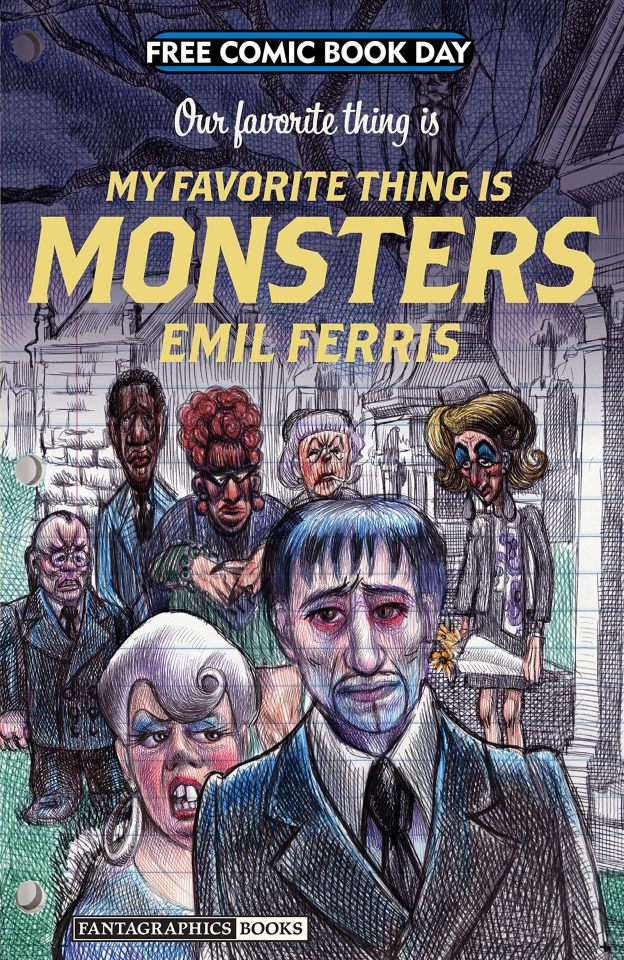
Best Continuing Series
Bitter Root, by David Walker, Chuck Brown, and Sanford Greene (Image)
Criminal, by Ed Brubaker and Sean Phillips (Image)
Crowded, by Christopher Sebela, Ro Stein, and Ted Brandt (Image)
Daredevil, by Chip Zdarsky and Marco Checchetto (Marvel)
The Dreaming, by Simon Spurrier, Bilquis Evely et al. (DC)
Immortal Hulk, by Al Ewing, Joe Bennett, and Ruy José et al. (Marvel)
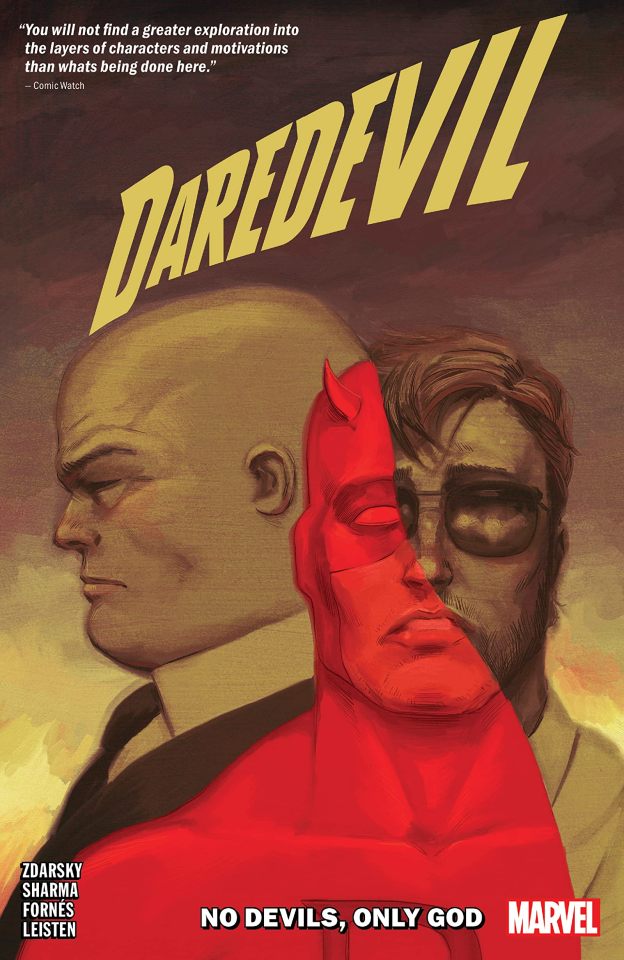
Best Limited Series
Ascender, by Jeff Lemire and Dustin Nguyen (Image)
Ghost Tree, by Bobby Curnow and Simon Gane (IDW)
Little Bird by Darcy Van Poelgeest and Ian Bertram (Image)
Naomi by Brian Michael Bendis, David Walker, and Jamal Campbell (DC)
Sentient, by Jeff Lemire and Gabriel Walta (TKO)

Best New Series
Doctor Doom, by Christopher Cantwell and Salvador Larocca (Marvel)
Invisible Kingdom, by G. Willow Wilson and Christian Ward (Berger Books/Dark Horse)
Once & Future, by Kieron Gillen and Dan Mora (BOOM! Studios)
Something Is Killing the Children, by James Tynion IV and Werther Dell’Edera (BOOM! Studios)
Undiscovered Country, by Scott Snyder, Charles Soule, Giuseppe Camuncoli, and Daniele Orlandini (Image)

Best Publication for Kids
Akissi: More Tales of Mischief, by Marguerite Abouet and Mathieu Sapin (Flying Eye/Nobrow)
Dog Man: For Whom the Ball Rolls, by Dav Pilkey (Scholastic Graphix)
Guts, by Raina Telgemeier (Scholastic Graphix)
New Kid, by Jerry Craft (Quill Tree/HarperCollins)
This Was Our Pact, by Ryan Andrews (First Second/Macmillan)
The Wolf in Underpants, by Wilfrid Lupano, Mayana Itoïz, and Paul Cauuet (Graphic Universe/Lerner Publishing Group)
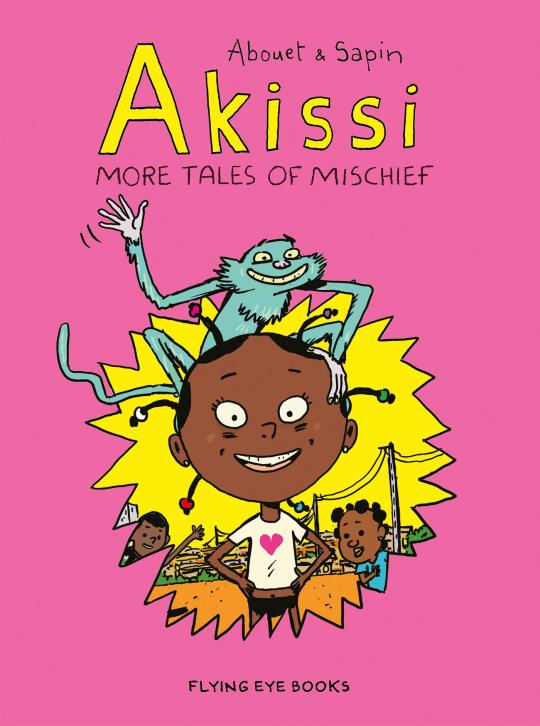
Best Publication for Teens
Harley Quinn: Breaking Glass, by Mariko Tamaki and Steve Pugh (DC)
Hot Comb, by Ebony Flowers (Drawn & Quarterly)
Kiss Number 8, by Colleen AF Venable and Ellen T. Crenshaw (First Second/Macmillan)
Laura Dean Keeps Breaking Up with Me, by Mariko Tamaki and Rosemary Valero-O'Connell (First Second/Macmillan)
Penny Nichols, by MK Reed, Greg Means, and Matt Wiegle (Top Shelf)
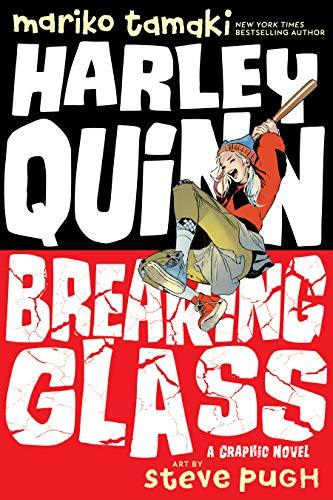
Best Humor Publication
Anatomy of Authors, by Dave Kellett (SheldonComics.com)
Death Wins a Goldfish, by Brian Rea (Chronicle Books)
Minotäar, by Lissa Treiman (Shortbox)
Sobek, by James Stokoe (Shortbox)
The Way of the Househusband, vol. 1, by Kousuke Oono, translation by Sheldon Drzka (VIZ Media)
Wondermark: Friends You Can Ride On, by David Malki (Wondermark)

Best Anthology
ABC of Typography, by David Rault, translation by Edward Gauvin (SelfMade Hero)
Baltic Comics Anthology š! #34-37, edited by David Schilter, Sanita Muižniece et al. (kuš!)
Drawing Power: Women’s Stories of Sexual Violence, Harassment, and Survival, edited by Diane Noomin (Abrams)
Kramer’s Ergot #10, edited by Sammy Harkham (Fantagraphics)
The Nib #2–4, edited by Matt Bors (Nib)
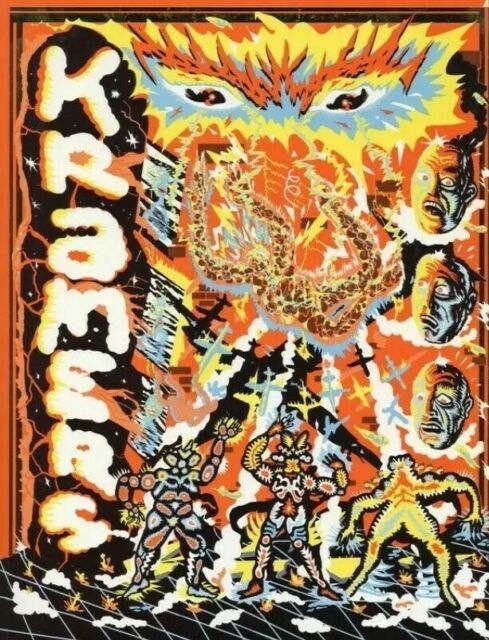
Best Reality-Based Work
Good Talk: A Memoir in Conversations, by Mira Jacob (One World/Random House)
Grass, by Keum Suk Gendry-Kim, translation by Janet Hong (Drawn & Quarterly)
Kid Gloves: Nine Months of Careful Chaos, by Lucy Knisley (First Second/Macmillan)
Moonbound: Apollo 11 and the Dream of Spaceflight, by Jonathan Fetter-Vorm (Hill & Wang)
My Solo Exchange Diary, vol. 2 (sequel to My Lesbian Experience with Loneliness), by Nagata Kabi, translation by Jocelyne Allen (Seven Seas)
They Called Us Enemy, by George Takei, Justin Eisinger, Steven Scott, and Harmony Becker (Top Shelf)
Best Graphic Album—New
Are You Listening? by Tillie Walden (First Second/Macmillan)
Bezimena, by Nina Bunjevac (Fantagraphics)
BTTM FDRS, by Ezra Claytan Daniels and Ben Passmore (Fantagraphics)
Life on the Moon, by Robert Grossman (Yoe Books/IDW)
New World, by David Jesus Vignolli (Archaia/BOOM!)
Reincarnation Stories, by Kim Deitch (Fantagraphics)
Best Graphic Album—Reprint
Bad Weekend by Ed Brubaker and Sean Phillips (Image)
Clyde Fans, by Seth (Drawn & Quarterly)
Cover, vol. 1, by Brian Michael Bendis and David Mack (DC/Jinxworld)
Glenn Ganges: The River at Night, by Kevin Huizenga (Drawn & Quarterly)
LaGuardia, by Nnedi Okorafor and Tana Ford (Berger Books/Dark Horse)
Rusty Brown, by Chris Ware (Pantheon)
Best Adaptation from Another Medium
Giraffes on Horseback Salad: Salvador Dali, the Marx Brothers, and the Strangest Movie Never Made, by Josh Frank, Tim Hedecker, and Manuela Pertega (Quirk Books)
The Giver, by Lois Lowry, adapted by P. Craig Russell, (HMH Books for Young Readers)
The Handmaid’s Tale: The Graphic Novel, by Margaret Atwood, adapted by Renee Nault (Nan A. Talese)
HP Lovecraft’s At the Mountains of Madness, vols. 1–2, adapted by Gou Tanabe, translation by Zack Davisson (Dark Horse Manga)
The Seventh Voyage, by Stanislaw Lem, adapted by Jon J Muth, translation by Michael Kandel (Scholastic Graphix)
Snow, Glass, Apples, by Neil Gaiman and Colleen Doran (Dark Horse Books)
Best U.S. Edition of International Material
Diabolical Summer, by Thierry Smolderen and Alexandre Clerisse, translation by Edward Gauvin (IDW)
Gramercy Park, by Timothée de Fombelle and Christian Cailleaux, translation by Edward Gauvin (EuroComics/IDW)
The House, by Paco Roca, translation by Andrea Rosenberg (Fantagraphics)
Maggy Garrisson, by Lewis Trondheim and Stéphane Oiry, translation by Emma Wilson (SelfMadeHero)
Stay, by Lewis Trondheim and Hubert Chevillard, translation by Mike Kennedy (Magnetic Press)
Wrath of Fantômas, by Olivier Bocquet and Julie Rocheleau, translation by Edward Gauvin (Titan)
Best U.S. Edition of International Material—Asia
BEASTARS, by Paru Itagaki, translation by Tomo Kimura (VIZ Media)
Cats of the Louvre, by Taiyo Matsumoto, translation by Michael Arias (VIZ Media)
Grass, by Keum Suk Gendry-Kim, translation by Janet Hong (Drawn & Quarterly)
Magic Knight Rayearth 25th Anniversary Edition, by CLAMP, translation by Melissa Tanaka (Kodansha)
The Poe Clan, by Moto Hagio, translation by Rachel Thorn (Fantagraphics)
Witch Hat Atelier, by Kamome Shirahama, translation by Stephen Kohler (Kodansha)
Best Archival Collection/Project—Strips
Cham: The Best Comic Strips and Graphic Novelettes, 1839–1862, by David Kunzle (University Press of Mississippi)
Ed Leffingwell’s Little Joe, by Harold Gray, edited by Peter Maresca and Sammy Harkham (Sunday Press Books)
The George Herriman Library: Krazy & Ignatz 1916–1918, edited by R.J. Casey (Fantagraphics)
Krazy Kat: The Complete Color Sundays, by George Herriman, edited by Alexander Braun (TASCHEN)
Madness in Crowds: The Teeming Mind of Harrison Cady, by Violet and Denis Kitchen (Beehive Books)
Pogo, Vol. 6: Clean as a Weasel, by Walt Kelly, edited by Mark Evanier and Eric Reynolds (Fantagraphics)
Best Archival Collection/Project—Comic Books
Alay-Oop, by William Gropper (New York Review Comics)
The Complete Crepax, vol. 5: American Stories, edited by Kristy Valenti (Fantagraphics)
Jack Kirby’s Dingbat Love, edited by John Morrow (TwoMorrows)
Moonshadow: The Definitive Edition, by J. M. DeMatteis, Jon J Muth, George Pratt, Kent Williams, and others (Dark Horse Books)
Stan Sakai’s Usagi Yojimbo: The Complete Grasscutter Artist Select, by Stan Sakai, edited by Scott Dunbier (IDW)
That Miyoko Asagaya Feeling, by Shinichi Abe, translation by Ryan Holmberg, edited by Mitsuhiro Asakawa (Black Hook Press)
Best Writer
Bobby Curnow, Ghost Tree (IDW)
MK Reed and Greg Means, Penny Nichols (Top Shelf)
Mariko Tamaki, Harley Quinn: Breaking Glass (DC); Laura Dean Keeps Breaking Up with Me (First Second/Macmillan); Archie (Archie)
Lewis Trondheim, Stay (Magnetic Press); Maggy Garrisson (SelfMadeHero)
G. Willow Wilson, Invisible Kingdom (Berger Books/Dark Horse); Ms. Marvel (Marvel)
Chip Zdarsky, White Trees (Image); Daredevil, Spider-Man: Life Story (Marvel); Afterlift (comiXology Originals)
Best Writer/Artist
Nina Bunjevac, Bezimena (Fantagraphics)
Mira Jacob, Good Talk (Random House); “The Menopause” in The Believer (June 1, 2019)
Keum Suk Gendry-Kim, Grass (Drawn & Quarterly)
James Stokoe, Sobek (Shortbox)
Raina Telgemeier, Guts (Scholastic Graphix)
Tillie Walden, Are You Listening? (First Second/Macmillan)
Best Penciller/Inker or Penciller/Inker Team
Ian Bertram, Little Bird (Image)
Colleen Doran, Snow, Glass, Apples (Dark Horse)
Bilquis Evely, The Dreaming (DC)
Simon Gane, Ghost Tree (IDW)
Steve Pugh, Harley Quinn: Breaking Glass (DC)
Rosemary Valero-O'Connell, Laura Dean Keeps Breaking Up with Me (First Second/Macmillan)
Best Painter/Digital Artist
Didier Cassegrain, Black Water Lilies (Europe Comics)
Alexandre Clarisse, Diabolical Summer (IDW)
David Mack, Cover (DC)
Léa Mazé, Elma, A Bear’s Life, vol. 1: The Great Journey (Europe Comics)
Julie Rocheleau, Wrath of Fantômas (Titan)
Christian Ward, Invisible Kingdom (Berger Books/Dark Horse)
Best Cover Artist
Jen Bartel, Blackbird (Image Comics)
Francesco Francavilla, Archie, Archie 1955, Archie Vs. Predator II, Cosmo (Archie)
David Mack, American Gods, Fight Club 3 (Dark Horse); Cover (DC)
Emma Rios, Pretty Deadly (Image)
Julian Totino Tedesco, Daredevil (Marvel)
Christian Ward, Machine Gun Wizards (Dark Horse), Invisible Kingdom (Berger Books/Dark Horse)
Best Coloring
Lorena Alvarez, Hicotea (Nobrow)
Jean-Francois Beaulieu, Middlewest, Outpost Zero (Image)
Matt Hollingsworth, Batman: Curse of the White Knight, Batman White Knight Presents Von Freeze (DC); Little Bird, November (Image)
Molly Mendoza, Skip (Nobrow)
Dave Stewart, Black Hammer, B.P.R.D.: The Devil You Know, Hellboy and the BPRD (Dark Horse); Gideon Falls (Image); Silver Surfer Black, Spider-Man (Marvel)
Best Lettering
Deron Bennett, Batgirl, Green Arrow, Justice League, Martian Manhunter (DC); Canto (IDW); Assassin Nation, Excellence (Skybound/Image); To Drink and To Eat, vol. 1 (Lion Forge); Resonant (Vault)
Jim Campbell, Black Badge, Coda (BOOM Studios); Giant Days, Lumberjanes: The Shape of Friendship (BOOM Box!); Rocko’s Modern Afterlife (KaBOOM!); At the End of Your Tether (Lion Forge); Blade Runner 2019 (Titan); Mall, The Plot, Wasted Space (Vault)
Clayton Cowles, Aquaman, Batman, Batman and the Outsiders, Heroes in Crisis, Superman: Up in the Sky, Superman’s Pal Jimmy Olsen (DC); Bitter Root, Pretty Deadly, Moonstruck, Redlands, The Wicked + The Divine (Image); Reaver (Skybound/Image); Daredevil, Ghost-Spider, Silver Surfer Black, Superior Spider-Man, Venom (Marvel)
Emilie Plateau, Colored: The Unsung Life of Claudette Colvin (Europe Comics)
Stan Sakai, Usagi Yojimbo (IDW)
Tillie Walden, Are You Listening? (First Second/Macmillan)
Best Comics-Related Periodical/Journalism
Comic Riffs blog, by Michael Cavna with David Betancourt, www.washingtonpost.com/entertainment/comics/
The Comics Journal, edited by Gary Groth, RJ Casey, and Kristy Valenti (Fantagraphics)
Hogan’s Alley, edited by Tom Heintjes (Hogan’s Alley)
Inks: The Journal of the Comics Studies Society, edited by Qiana Whitted (Ohio State University Press)
LAAB Magazine, vol. 4: This Was Your Life, edited by Ronald Wimberly and Josh O’Neill (Beehive Books)
Women Write About Comics, edited by Nola Pfau and Wendy Browne, www.WomenWriteAboutComics.com
Best Comics-Related Book
The Art of Nothing: 25 Years of Mutts and the Art of Patrick McDonnell (Abrams)
The Book of Weirdo, by Jon B. Cooke (Last Gasp)
Grunt: The Art and Unpublished Comics of James Stokoe (Dark Horse)
Logo a Gogo: Branding Pop Culture, by Rian Hughes (Korero Press)
Making Comics, by Lynda Barry (Drawn & Quarterly)
Screwball! The Cartoonists Who Made the Funnies Funny, by Paul Tumey (Library of American Comics/IDW)
Best Academic/Scholarly Work
The Art of Pere Joan: Space, Landscape, and Comics Form, by Benjamin Fraser (University of Texas Press)
The Comics of Rutu Modan: War, Love, and Secrets, by Kevin Haworth (University Press of Mississippi)
EC Comics: Race, Shock, and Social Protest, by Qiana Whitted (Rutgers University Press)
The Peanuts Papers: Writers and Cartoonists on Charlie Brown, Snoopy & the Gang, and the Meaning of Life, edited by Andrew Blauner (Library of America)
Producing Mass Entertainment: The Serial Life of the Yellow Kid, by Christina Meyer (Ohio State University Press)
Women’s Manga in Asia and Beyond: Uniting Different Cultures and Identities, edited by Fusami Ogi et al. (Palgrave Macmillan)
Best Publication Design
Grunt: The Art and Unpublished Comics of James Stokoe, designed by Ethan Kimberling (Dark Horse)
Krazy Kat: The Complete Color Sundays, by George Herriman, designed by Anna-Tina Kessler (TASCHEN)
Logo a Gogo, designed by Rian Hughes (Korero Press)
Madness in Crowds: The Teeming Mind of Harrison Cady, designed by Paul Kopple and Alex Bruce (Beehive Books)
Making Comics, designed by Lynda Barry (Drawn & Quarterly)
Rusty Brown, designed by Chris Ware (Pantheon)
Best Digital Comic
Afterlift, by Chip Zdarsky and Jason Loo (comiXology Originals)
Black Water Lilies, by Michel Bussi, adapted by Frédéric Duval and Didier Cassegrain, translated by Edward Gauvin (Europe Comics)
Colored: The Unsung Life of Claudette Colvin, by Tania de Montaigne, adapted by Emilie Plateau, translated by Montana Kane (Europe Comics)
Elma, A Bear’s Life, vol. 1: The Great Journey, by Ingrid Chabbert and Léa Mazé, translated by Jenny Aufiery (Europe Comics)
Mare Internum, by Der-shing Helmer (comiXology; gumroad.com/l/MIPDF)
Tales from Behind the Window, by Edanur Kuntman, translated by Cem Ulgen (Europe Comics)
Best Webcomic
Cabramatta, by Matt Huynh, http://believermag.com/cabramatta/
Chuckwagon at the End of the World, by Erik Lundy, https://hollowlegcomics.tumblr.com/chuckwagon
The Eyes, by Javi de Castro, https://www.javidecastro.com/theeyes
Fried Rice Comic, by Erica Eng, https://friedricecomic.tumblr.com
reMIND, by Jason Brubaker, https://is.gd/T7rafM
Third Shift Society, by Meredith Moriarty, https://www.webtoons.com/en/supernatural/third-shift-society/list?title_no=1703
#eisner awards#DC comics#Marvel Comics#image Comics#IDW#Dark Horse#Boom Studios#toon#first second#Top Shelf#naomi#Harley Quinn#doctor doom#Daredevil#immortal hulk#bitter root#the dreaming#criminal#crowded#ascender#ghost tree#little bird#sentient#invisible kingdom#once & future#something is killing the children#undiscovered country#comixology originals#webtoons#archie comics
2 notes
·
View notes
Text
Unbroken Windows: How New York Gentrified Itself On Screen by Jason Bailey
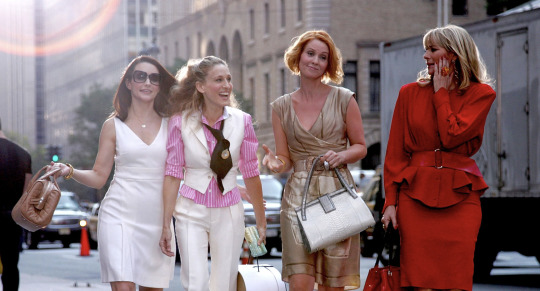
It was 1972, and Lewis Rudin had a problem—specifically, a Johnny Carson problem. Rudin, a real estate developer and committed New Yorker, had founded the Association for a Better New York (ABNY), an organization dedicated to cleaning up the city’s image (and thus, its attractiveness to corporate clients) via aggressive campaigning and spit-shine marketing; the organization was, for example, instrumental in the development of the iconic I ❤ NY campaign.
But all the good work ABNY was doing, Rudin fumed to the organization’s executive director Mary Holloway, felt like pushing Sisyphus’ boulder when he switched on NBC late at night: “How can we change the image of New York when Johnny Carson's opening monologue every night is about people getting mugged in Central Park?”
As reported by Miriam Greenberg in her book Branding New York: How a City in Crisis Was Sold to the World, Rudin went to the trouble of meeting with network heads, imploring them to pressure personalities like Carson to lighten up on the “New York City is a crime-ridden cesspool” jokes. In 1973, Mayor John Lindsay himself called network executives and even some comedians to a City Hall meeting where he made a similar plea. This was in stark contrast to the usual modus operandi of the Mayor’s Office of Film, Theatre, and Broadcasting, which prided itself on avoiding censorship or editorial interference in the making of motion pictures in the city—indeed, several of the grimmest, grimiest portraits of life in New York (Death Wish, Panic in Needle Park, Little Murders, The French Connection) were borne of this period. But people had to go out to see those. Johnny Carson came into their living room every night to tell them what a shithole New York was.
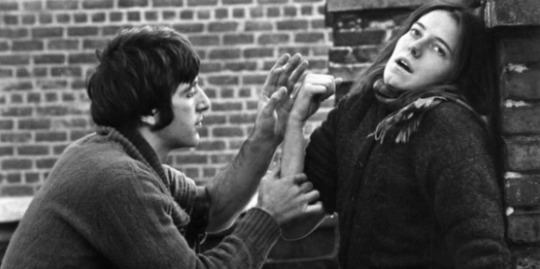
Rudin and Lindsay’s efforts were ultimately unsuccessful. Johnny Carson continued to roast the city—especially after escaping it when The Tonight Show relocated to Burbank, California in 1972—and prime-time comedies like All in the Family, Taxi, and Welcome Back, Kotter mined similar veins of urban unrest. Meanwhile, gritty crime series from Kojak to Cagney & Lacey to The Equalizer presented a similar picture of the city—dirty, grimy, and dangerous—to that of films like Taxi Driver, The Taking of Pelham One Two Three, The Warriors, and Fort Apache, The Bronx.
But in the 1990s, that all changed. And there’s a compelling case to be made that the change began with Jerry Seinfeld.
*

If we talk about Jerry Seinfeld, of course, we have to talk about Woody Allen, and not just their obvious similarities (roots in stand-up comedy, neurotic Jewish New Yorker persona, tabloid mainstay). In the 1970s and 1980s, while most New York movies were dwelling in the horrors and shortcomings of the city, Allen insulated himself in his upper-class Upper East Side neighborhood and made movies about people who were mostly untouched by crime, homelessness, and graffiti. In films like Annie Hall, Manhattan, Hannah and Her Sisters, and Crimes and Misdemeanors, Allen’s characters sip wine and trade hard truths and pointed witticisms at the city’s finest restaurants, parties, and apartments as the city burns around them; in Manhattan (which, by its own opening monologue admission, romances the city “all out of proportion”) he even edited out a joke about muggings from a Central Park carriage ride sequence, so as not to spoil the delicate mood. Allen’s New York was “not another world,” Martin Scorsese once said. “It’s another planet.”
That vision of New York—upper-crust, erudite, sophisticated—wasn’t entirely absent from the big and small screen in the ‘70s and ‘80s, thanks to films like An Unmarried Woman and Kramer Vs. Kramer, and such TV shows as Diff’rent Strokes and The Cosby Show. But Allen’s films, and even more so Rob Reiner and Nora Ephron’s Allen-esque When Harry Met Sally (a far bigger commercial success than any of Woody’s work), created a vision of comfortable, upscale, wise-cracking New York living that would reach a mass audience via Seinfeld, which debuted in 1989.

The first two brief seasons of Seinfeld (or, as it was originally titled, The Seinfeld Chronicles) struggled in the ratings, but it slowly built an audience and climbed in the Nielsens, and by season five (1993-1994) it was one of the top five shows on the air, anchoring NBC’s “Must See TV” line-up of Thursday night sitcoms. In September 1994, it was joined on Thursdays by another comedy, in which urbane New York pals joked, dated, and shared the horrors of city living. Friends, however, was a rating smash right away, and not only because of its killer schedule placement. It sanded away the rougher edges of Seinfeld; its characters were more likable (or, at least, intended to be), and its humor was less spiky. It ran even longer than Seinfeld, ten seasons, every one of them in the top ten, all but one in the top five.
*
Even as these New York comedies—and others that followed, like Mad About You, Caroline in the City, and The Single Guy—were topping the ratings, the face of the city was changing. “Don’t forget to in the late ’80s, you came off of a couple of financial crises, some bad times,” explains agent Chris Fry, of Elegran Real Estate. ”It was a little bit more affordable, things were dropping. And I think the shows that you’re talking about definitely had a positive effect on what people perceived New York City to be.”
Crime was on the decline across the country, but especially in New York City, a drop that began under Mayor David Dinkins and continued under Rudy Giuliani. The latter, in coordination with NYPD commissioner William Bratton, instituted an aggressive policy of enforcing so-called “quality of life” crimes like graffiti, turnstile-jumping, and panhandling; this philosophy, modeled on James Q. Wilson and George L. Kelling’s controversial “broken windows” theory, held that if these comparatively minor yet highly visible crimes were eradicated, the city would look clean and controlled, and thus psychologically discourage a lawlessness that would result in fewer serious offenses like murder, rape, and theft.

This vision of the city was certainly reflected in NBC’s Thursday night lineup. The early ‘90s comedies found fodder in the minor inconveniences of city life, but rarely trod into the seediness and crime that defined such earlier sitcoms as Night Court and Barney Miller. Paul and Jamie Buchman’s apartment wasn’t burglarized; none of the Friends were mugged in Central Park. When a blackout hit New York City in the summer of 1977, there were over one thousand fires, over 1500 damaged and/or looted stores, and nearly four thousand arrests. When a blackout hit NBC’s Thursday night New York City in the fall of 1994, Chandler Bing got trapped in an ATM vestibule with a supermodel.
If these sitcoms were the television reflection of the “broken windows” theory, their creators had a much easier time cleaning up New York City—in part because they weren’t shooting in it. Much like the films set in New York City before Mayor Lindsay established the Mayor’s Office of Film, Theatre, and Broadcasting, all of these series were shot on soundstages and backlots in California, with the exception of the occasional second-unit exterior establishing shot. So they took place in New York City, but the version of New York City they presented was highly fictionalized. Just as Paul and Jamie, Jerry and the gang, and the Central Perk crew were funnier and sharper than real New Yorkers (and lived in apartments far beyond their means), the New York they lived in was squeakier and clearer.
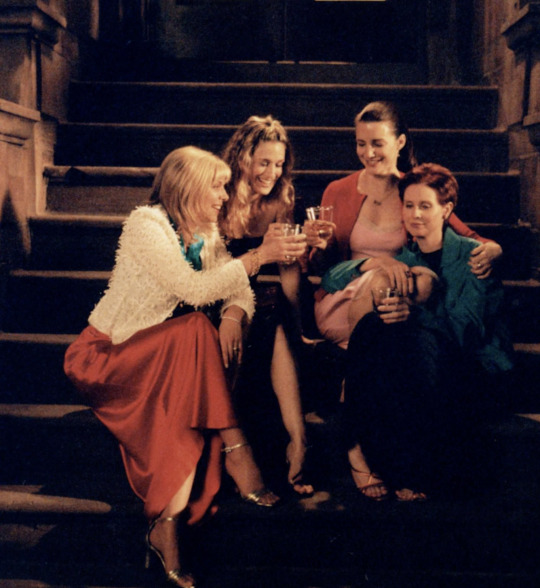
“I love Friends,” says Sire Leo Lamar-Becker, who was inspired by the shows of the ‘90s to leave California and move to New York, where he currently works in the fashion industry. “But Friends was so sterile. It didn’t feel real. And what Sex and the City offered was, I felt, a more nuanced portrayal of the city.”
Like the New York movies from the late 1960s onward, Sex and the City had the advantage of authenticity: It was shot entirely in New York, the exteriors and the sets (constructed and filmed at Silvercup Studios) and everything in between. “If you’re familiar with this series, and the movies, the city is integral to it,” explains tour guide Lou Matthews. “They've called it, like the fifth girl is the city. It's really crucial.” As a guide for the “Sex and the City Hotspots Tour,” which On Location Tours has conducted since 2001, Matthews has seen, firsthand, the psychological effect of that particular show.
“I've definitely met girls in their twenties, or maybe they’re still in college, on the tour who are saying, ‘Yeah, I fell in love with Sex in the City and New York City because of Sex in the City. And like, I’m already trying to figure out how I can get a job here.’ And then I’ve definitely met a few where the reason they moved here was because of Sex in the City, like they wanted the life that Carrie has. And here they are.”
The life they found was, in most cases, not exactly what these shows promised. “As someone who has lived here for 10 years,” laughs Lamar-Becker, “sure, there are some things that are unrealistic—like, Carrie being able to afford all her shoes. That’s unrealistic. But the feeling of the city is always captured well.”
And that indefinable but unmistakable quality, that feeling of the city, is what’s shifted most over the past quarter-century or so – through Seinfeld and Friends and Sex and the City into 30 Rock and Gossip Girl and Girls, through When Harry Met Sally and You’ve Got Mail to The Devil Wears Prada, Trainwreck, and even The Avengers. Some of that shift in public perception is merely a reflection of reality, of filmmakers and show-runners pointing their cameras at the city and capturing the gentrified, yuppified, Disney-fied mutation it’s become.

But some of that is also life imitating art. Every day, Lou Matthews’s tour bus is filled with people like Sire Leo Lamar-Becker, members of a generation of viewers whose impressions of New York were formed not by Taxi Driver and Kojak, but by the Sex and the City films and Netflix binges of Friends. They watched those shows and memorized those movies, and then migrated to New York City like so many immigrants before them. Their predecessors flocked to Ellis Island, lured by promises of a new world. These settlers came to the Magnolia Bakery, seeking not so much a new world as a better one, full of enviable careers, witty friends, and all the cosmos they could drink.
Lewis Rudin would have been proud.
#New York City#johnny carson#lewis rudin#abny#death wish#panic in needle park#little murders#the french connection#all in the family#taxi#taxi driver#welcome back kotter#the equalizer#cagney and lacey#the taking of pelham 1 2 3#the warriors#fort apache the bronx#seinfeld#woody allen#manhattan#hannah and her sisters#annie hall#crimes and misdemeanors#kramer vs kramer#an unmarried woman#martin scorsese#diffrent strokes#the cosby show#friends#sex and the city
5 notes
·
View notes
Photo




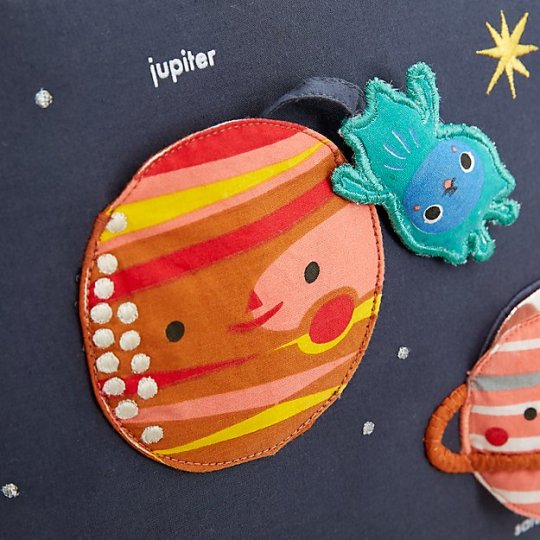




Crate and Barrel FTW with this fantastic space themed baby gear! I’m jealous that I can’t have this activity chair be my actual office and how about we make “tummy time” a thing for adults too? Who’s with me?!
Deep Space Activity Chair
Deep Space Tummy Time Toy
Outer Space Activity Gym
- Summer
HT Miriam Kramer
#weewednesday#wee wednesday#kids#babies#baby#toddler#toddlers#space#crate and barrel#crateandbarrel#tummy time#activity chair#activity gym#baby toys#solar system
95 notes
·
View notes